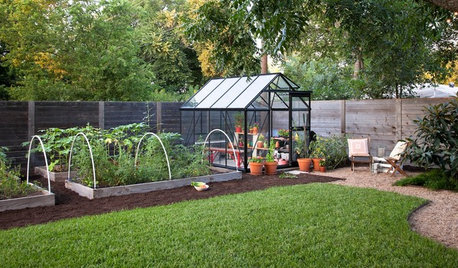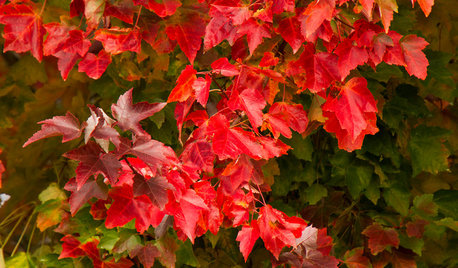Will a Bradford Pear pollinate a Fruiting Pear?
logrock
14 years ago
Related Stories

EDIBLE GARDENSHow to Grow Your Own European and Asian Pears
Try these trees for their good looks, delicious fruit and wide range of sizes — plus you can espalier them
Full Story
FARM YOUR YARDIf You Have Room for Only One Fruit Tree ...
Juice up a small garden with one of these easier-care or worth-the-effort fruit trees for a mild climate
Full Story
EDIBLE GARDENSHow to Grow 10 Favorite Fruit Trees at Home
Plant a mini orchard in fall, winter or early spring to enjoy fresh-off-the-tree fruit the following year
Full Story
EDIBLE GARDENSHow to Grow Your Own Peaches and Nectarines
Make gardening a little sweeter with these juicy fruits, which you can eat after plucking or preserve for later
Full Story
GARDENING GUIDESAttract Hummingbirds and Bees With These Beautiful Summer Flowers
Roll out a welcome mat for pollinators to keep your landscape in balance and thriving
Full Story
EDIBLE GARDENSA Formerly Weedy Lot Now Brims With Edibles and Honeybees
Photographers transform their barren backyard into an oasis filled with fruit, vegetables, honey, eggs and more
Full Story
EDIBLE GARDENSHow to Add an Apple Tree to Your Edible Garden
Readily available, beautiful and fragrant, apple trees offer four-season interest along with crisp, juicy fruit
Full Story
FRUIT TREESHow to Grow Your Own Juicy Plums
Easier than other stone fruits and with a variety of colors to choose from, plums are a versatile garden addition
Full Story
TREESGreat Design Plant: Acer Rubrum Brings Shade and Beauty
Red maple — a fast-growing, low-maintenance Eastern native — has spectacular fall foliage and early-spring flowers that feed pollinators
Full Story
SPRING GARDENINGTop 10 Scented Plants for Your Garden
A palette of perfumed plants can transform even the smallest of gardens into a sensory delight
Full StorySponsored






strudeldog_gw
cyrus_gardner
Related Professionals
West Chester Landscape Architects & Landscape Designers · Forest City Landscape Architects & Landscape Designers · Frisco Landscape Contractors · Norwood Landscape Contractors · Firestone Landscape Contractors · Paterson Landscape Contractors · Pikesville Landscape Contractors · Ramsey Landscape Contractors · Kingsburg Landscape Contractors · Cherry Hill Fence Contractors · Cockeysville Fence Contractors · Fort Lauderdale Fence Contractors · Skokie Fence Contractors · Coconut Grove Window Contractors · Tamiami Window ContractorslogrockOriginal Author
strudeldog_gw
Iris GW
satellitehead
logrockOriginal Author
jimbyfg
Thomas Pickens